Global Grassland Adventure

This module explores an extremely important ecosystem that is found all over the world: grasslands! In this lesson, the Green Team is traveling around the world to locate and define these ecosystems by emphasizing their biodiversity, importance, how these ecosystems are impacted by humans, and how we can conserve them. Then, students will explore on their own the characteristics of grasslands in areas near them and make note of the native species that contribute to them.

After this module you will be able to:
- Describe the features of grasslands as well as their biodiversity all over the world.
- Explain the significance of grasslands.
- Analyze the characteristics of grasslands in your own environment.
CONTENT TEKS
- ES.4.B. Assess the role of native plants and animals within a local ecosystem and compare them to plants and animals in ecosystems within four other biomes.
- ES.4.A. Identify native plants and animals using a dichotomous key.
PROCESS TEKS
- ES.C.1.A. Demonstrate safe practices during laboratory and field investigations, including appropriate first aid responses to accidents that could occur in the field such as insect stings, animal bites, overheating, sprains, and breaks.
NEXT GENERATION SCIENCE STANDARDS
- 2-LS4-1. Make observations of plants and animals to compare the diversity of life in different habitats.
Materials
- Measuring tape (or ruler)
- 4 feet of yarn (you could also use rope, fishing line, or shoe laces)
- 4 sticks (or heavy object to hold your yarn in place, like rocks or shoes)
- STEM journal
- Writing utensils to record data (pencils, pen, markers)
- Timer
- Biodiversity in Grasslands Worksheet
- Common Native Plant Species Handout
- Camera
- Scissors
- Building Your Quadrat Activity (optional)
- Tape or glue
- Tongs or tweezers
- Build You Own Pocket Prairie Guide (optional)
Safety
- Adult permission, supervision, and assistance should be in place while working with scissors or sharp objects. Avoid touching the blade, stay focused while carefully handling the scissors, and remember to cut in the direction facing away from you.
- Exercise caution when using adhesives such as tape or glue.
- Do not touch or ingest any unknown organisms, and when working with plants and soil, be sure to handle them with care. Wash your hands or apply hand sanitizer immediately after handling.
- When handling plants, we recommend using gloves and tweezers (or kitchen tongs) to handle and avoid direct contact.
- Avoid going outside during the warmest times of the day; sunscreen is recommended to reduce risk of sunburn.
- Obtain guardian permission or be accompanied by a guardian when measuring biodiversity outside.
- Check the area in advance and be aware of unsafe structures, building rubble, or any other risks that could lead to falling or wounds. Avoid any hazards or have an adult help remove them; it is advised to identify them with warning signs if possible.
- When traveling to your local prairie/grassland/park, follow proper CDC guidelines and maintain social distancing when others are present.
Activity
In this activity, you are going to join The Green Team on an adventure as we explore and measure the biodiversity of grasslands all around the world! Learn how to build a quadrat to compare the number/types of plant, animal, or insect species around your house and around your nearest prairie or grassland.
Watch the activity video below.
Steps
- Gather your supplies and your STEM journal.
- Follow the step-by-step instructions of Building Your Quadrat Activity to assemble your own quadrat and observe biodiversity.
- Record your findings on the Biodiversity in Grasslands Worksheet. You could write down or draw the organism that you found in your area.
- Based on your observations, draw conclusions.
- What location had more biodiversity? Why?
- How many organisms were you able to find at each location?
- What evidence did you use to determine when organisms belong to different species?
Dig Deeper
Read This
Did you know it is possible to restore prairies? Grasslands around the world and, more specifically, prairies in Texas provide multiple benefits for the land, people, and wildlife. There are many environmental groups around the world who dedicate their efforts to saving grassland ecosystems. In Houston, the Katy Prairie Conservancy works on restoring and improving grasslands around the Greater Houston Area.
Try This
Do you know what pocket prairies are? Pocket prairies are small urban planting areas that feature native plant species of the coastal prairie ecosystem. They are beneficial in urban areas because they help mitigate flood water, as well as keep native species of birds and pollinators safe and healthy. Research native species to grasslands around the world and build your own model.
Watch This
Did you know that fires can be beneficial for prairies? Prescribed fires are controlled, and scheduled burnings can help ecosystems by removing dead plant material and improving the soil quality. Additionally, prescribed fires could help control and eliminate the propagation of invasive species. As a result, many coastal prairie (or grassland) native species thrive after prescribed fires, offering much needed food and shelter to different wildlife species.
Did you know you could build a pocket prairie at school? Pocket prairies in schools provide students and teachers with endless opportunities to actively learn about grasslands, ecosystems, and biodiversity through experience and hands-on activities. It’s like taking a field trip in class!
Show What You Know
Meet Our Expert
Did you know that studying grasslands involves an understanding of biology, chemistry, physics, and math? Hear from Evelyn Merz, Program Director of the University of Houston Coastal Center, as she dives deep into the native species found in the coastal prairie that spreads through Louisiana, Texas, and northern Mexico.
Meet The Teachers

Jacqueline Ekeoba
Master Teacher, teachHOUSTON STEM Interactive
Interactive Team Lead, teachHOUSTON, Department of Mathematics, University of Houston
Jacqueline Ekeoba is an alumna of the inaugural group of students graduating through
the teachHOUSTON Program (University of Houston). She earned an M.A. in STEM Education and
Engineering (University of Texas) and is currently a Ph.D. candidate in Global Pragmatic
Research in STEM Education (Texas Tech University). As a former high school science
teacher and instructional coach, she mentors and volunteers through her church and
sorority (Zeta Phi Beta Sorority, Inc., Gamma Omega Zeta chapter). In her free time,
she writes comic book fan fiction and experiments with allergen-friendly cooking.
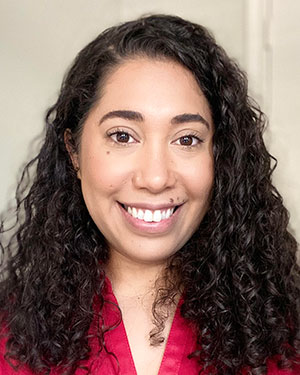
Yolanda Sanchez Arnaud
Environmental Systems Teacher, Spring Woods High School, Spring Branch ISD.
University of Houston, College of Natural Sciences and Mathematics, teachHOUSTON Alumna, Biology Major
Ms. Sanchez graduated from the University of Houston as a biology major. She currently
teaches environmental systems and uses every opportunity she gets to teach her students
about the importance of conservation. In her free time, Ms. Sanchez likes to spend
time being outdoors with her dog, Pepper, or watching Friends.
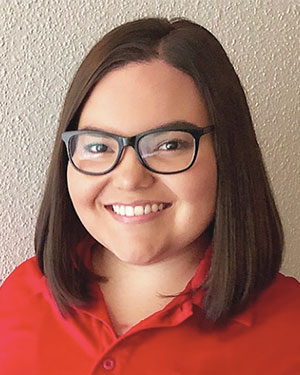
Fernanda Marrero Hi
Earth Science and Sociology Major, teachHOUSTON Preservice Teacher, University of Houston, College of Natural Sciences and
Mathematics
teachHOUSTON STEM Interactive Video Editor
Fernanda is an Earth science and sociology major at the University of Houston. She
is a senior in the teachHOUSTON Program and will be student teaching in the fall. In her free time, Ms. Marrero
enjoys walking her 5-year-old Alaskan husky and hiking at state and national parks.
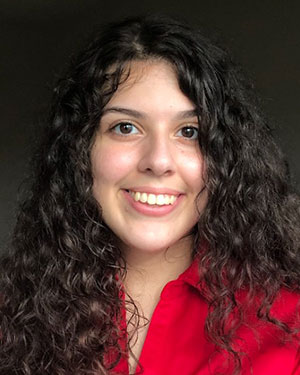
Anna Uribe
Biology Major, teachHOUSTON Preservice Teacher, University of Houston, College of Natural Sciences and
Mathematics
Anna is a biology major at the University of Houston. She is a member of teachHOUSTON, a program which combines her passions for STEM, teaching, and learning. In
her free time, she enjoys running, hiking, and spending time with her dogs!
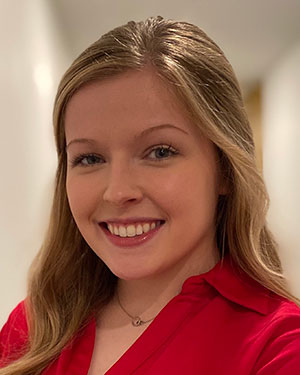
Molly Carmody
Biology Major, teachHOUSTON Preservice Teacher, University of Houston, College of Natural Sciences and
Mathematics
Molly is an undergraduate student at the University of Houston, where she is majoring
in biology as well as completing the teachHOUSTON Program. When she is not studying, Ms. Carmody enjoys traveling, going dancing,
and shopping at HomeGoods!
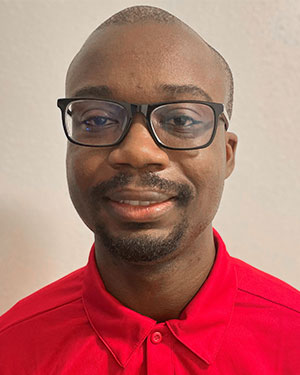
Emmanuel Kyei
Biomedical Sciences Major, teachHOUSTON Preservice Teacher, University of Houston, College of Natural Sciences and
Mathematics
Mr. Kyei is a graduate of the teachHouston Program and an upcoming biology teacher at Manvel High School in Alvin ISD.
In his free time, he enjoys doing many things, some of which are reading scientific
articles, writing (short novels, inspirational quotes, and motivational speeches),
and playing basketball.
- https://www.worldwildlife.org/biomes/temperate-grasslands-savannas-and-shrublands
- https://cat.org.uk/cat-at-home/cat_at_home-families/build-a-quadrat/
- https://www.inaturalist.org/signup
- https://www.worldwildlife.org/habitats/grasslands
- https://www.nationalgeographic.org/media/african-savanna-illustration/#:~:text=The%20African%20savanna%20ecosystem%20is,sunlight%20to%20reach%20the%20ground.
- https://www.environment.gov.au/land/rangelands
- https://earthobservatory.nasa.gov/biome/biograssland.php
- https://www.nationalgeographic.com/environment/article/grasslands
- https://www.nationalgeographic.org/encyclopedia/prairie/
- http://kids.nceas.ucsb.edu/biomes/grassland.html
- http://factsanddetails.com/central-asia/Central_Asian_Topics/sub8_8i/entry-4550.html
- https://www.britannica.com/place/the-Pampas
- https://animals.sandiegozoo.org/habitats/savanna
- https://www.opalauctions.com/learn/opal-information/list-australian-outback-animals-found-in-the-opal-fields
- https://www.worldwildlife.org/stories/animals-of-the-northern-great-plains
- https://www.enchantedlearning.com/biomes/grassland/prairie.shtml
- https://www.ga.gov.au/scientific-topics/community-safety/bushfire
- https://www.climate.gov/news-features/understanding-climate/climate-change-atmospheric-carbon-dioxide
- https://www.nationalgeographic.com/photography/article/digging-deep-reveals-the-intricate-world-of-roots
- https://gardenbagan.com/the-tallest-grass-in-the-world-garden-facts/#:~:text=%E2%80%93%20The%20Dragon%20bamboo%20also%20known,Average%20height%2020%2D25%20m.
- https://uh.edu/nsm/news-events/stories/2020/0325-controlled-burn.php
- https://www.nationalgeographic.com/environment/article/grassland-threats
- https://oceanservice.noaa.gov/facts/invasive.html
- https://www.cdc.gov/coronavirus/2019-ncov/communication/guidance.html
- http://speakingfromtheranch.blogspot.com/2010/11/mighty-live-oak-trees.html
- https://www.fast-growing-trees.com/products/princeton-elm-tree
- https://www.thetreeplace.com/collections/shade-trees/products/cedar-elm
- https://www.alsipnursery.com/product/hackberry-tree-bb-2-calipur/
- https://www.verywellhealth.com/poison-ivy-rhus-dermatitis-1068760
- https://www.americanmeadows.com/perennials/trumpet-vine/trumpet-vine-flamenco-campsis
- https://ecoblossom.com/products/inland-sea-oats-chasmanthium-latifolium
- https://davesgarden.com/guides/pf/showimage/92642/
- https://normsfarms.com/blogs/growing-and-harvesting-elderberry/growing-elderberry
- https://www.minnesotawildflowers.info/shrub/common-elderberry
- https://www.covingtonnursery.com/gardening/wax-myrtle/
- https://www.pinterest.com/pin/99360735519494925/
- https://www.inaturalist.org/guide_taxa/798379
- http://www.txsmartscape.com/plant-search/plant-details.php?id=394
- https://gardenrant.com/2014/06/whats-a-weed-and-is-spiderwort-one.html
- https://www.gardenexperiments.com/lyreleaf-sage/
- https://agrilifetoday.tamu.edu/2011/05/25/turks-cap-named-new-texas-superstar/
- https://neilsperry.com/2018/09/plant-week-turks-cap/
- https://www.springhillnursery.com/product/maximillian-perennial-sunflower
- https://www.joyfulbutterfly.com/product/indian-blanket-seeds/
- https://prairieecologist.com/2010/11/09/goldenrod-pretty-flower-or-evil-invader/
- https://www.highcountrygardens.com/perennial-plants/ratibida/ratibida-columnifera-mexican-hat
- https://www.thespruce.com/choosing-and-growing-black-eyed-susan-1402860
- https://www.gardenstylesanantonio.com/garden-tips-blog/plant/frogfruit/
- https://www.pinterest.com/pin/413416440764881795/
- https://nativebackyards.com/frog-fruit/